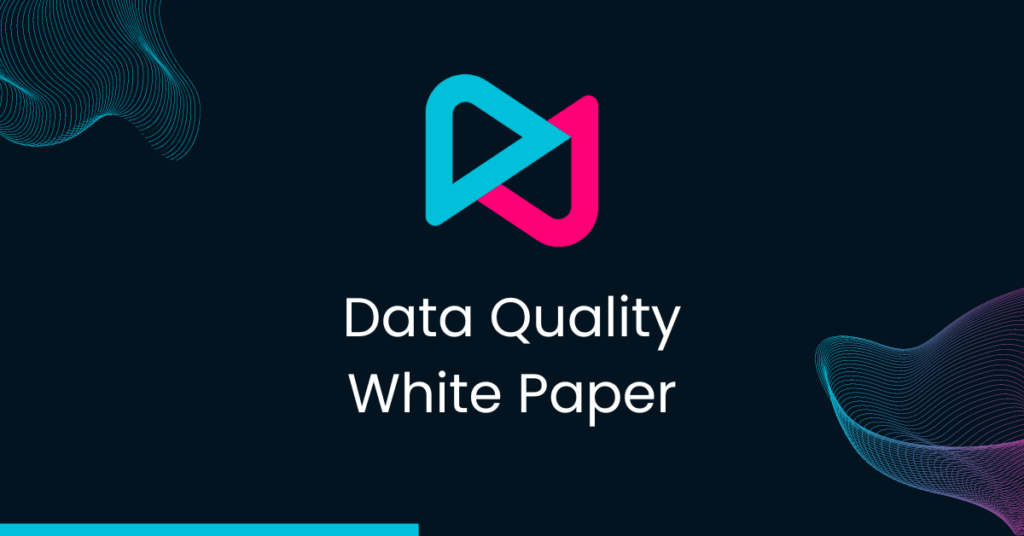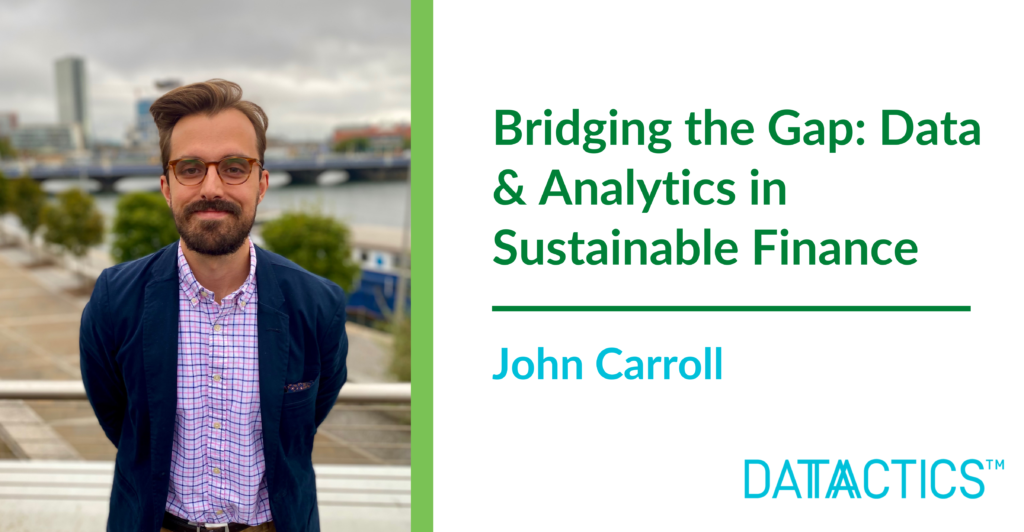
Bridging The Gap: Data & Analytics In Sustainable Finance – ESG Whitepaper by John Caroll
Addressing global environmental, social, and governance (ESG) challenges demands that institutional investors allocate capital toward commercial activities and endeavours that are considered to be climate neutral, climate resilient, resource efficient, and fair (European Commission, 2021) and away from those that are not. Simultaneously, the valuation of assets, companies, and whole sectors of the global economy are being influenced materially by a combination of Environmental (e.g., carbon emissions, pollution, deforestation, etc.) Social (e.g., Diversity, Security, Labour Practices, etc.) and Governance (e.g., board composition, executive pay, lobbying, etc.) factors. The incorporation of ESG metrics in capital allocation and stewardship decisions is now materially influencing both the valuation and performance of global investments with total ESG assets under management (AUM) projected to exceed $53 trillion by 2025 (Bloomberg Intelligence, 2021), representing in excess of one third of the total $140.5 trillion in projected total assets under management.
Set against the backdrop of regulatory evolution and investor demand, the need to properly measure and integrate ESG factors as part of capital allocation and stewardship is all too apparent. The consequences for organisations and leaders in failing to react to and optimise for rapidly evolving standards in sustainability incorporation are dramatic and wide-ranging, threatening value creation, risk management, regulatory readiness, investor transparency, and reduced cost of capital. As a consequence, the demand for more accurate and more consistent ESG data to support investors, regulators, and wider market participants in capital allocation and stewardship decisions has increased dramatically. That demand in turn has highlighted several significant data complications in three primary areas:
- Data Divergence
- Data Recency
- Data Consistency
So how can enabling technologies (emergent data science techniques, alternative data, analytics, and AI) rise to meet the challenges outlined? This report outlines the background, challenges, and recommendations necessary not only to enable institutional investors to harness analytics and analytical methodologies to meet the challenges outlined but also to understand the constraints and boundaries in doing so.
Access this Resource
A bit about the author
Head of Customer Success, John is a former First Derivatives Managing Consultant. With a keen interest in writing, John Carroll has written several pieces on the topic of ESG and is keen to express his thoughts on data ethics and quality. John has a passion for leading with passion and integrity and is the first one to think of solutions that push boundaries.


